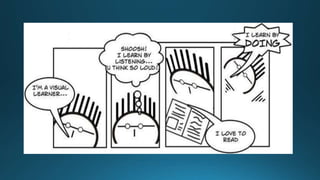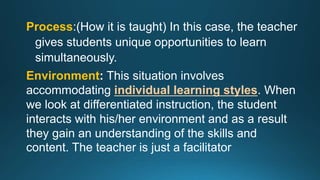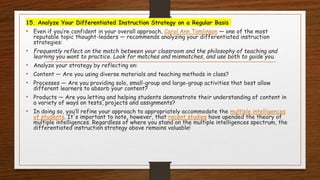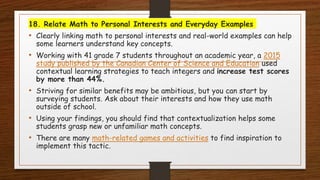This document provides information on differentiated instruction strategies for teachers. It begins by outlining learner objectives related to differentiated instruction. It then discusses the principles of differentiating content, process, and product for academically diverse classrooms. A variety of differentiated instruction strategies are presented for different subject areas like math, science, reading, and writing. Examples of differentiated strategies include learning stations, task cards, targeted questioning, flexible grouping, and appeals to different learning styles and senses. The document emphasizes that differentiated instruction is important for meeting the diverse needs of all students.






































































